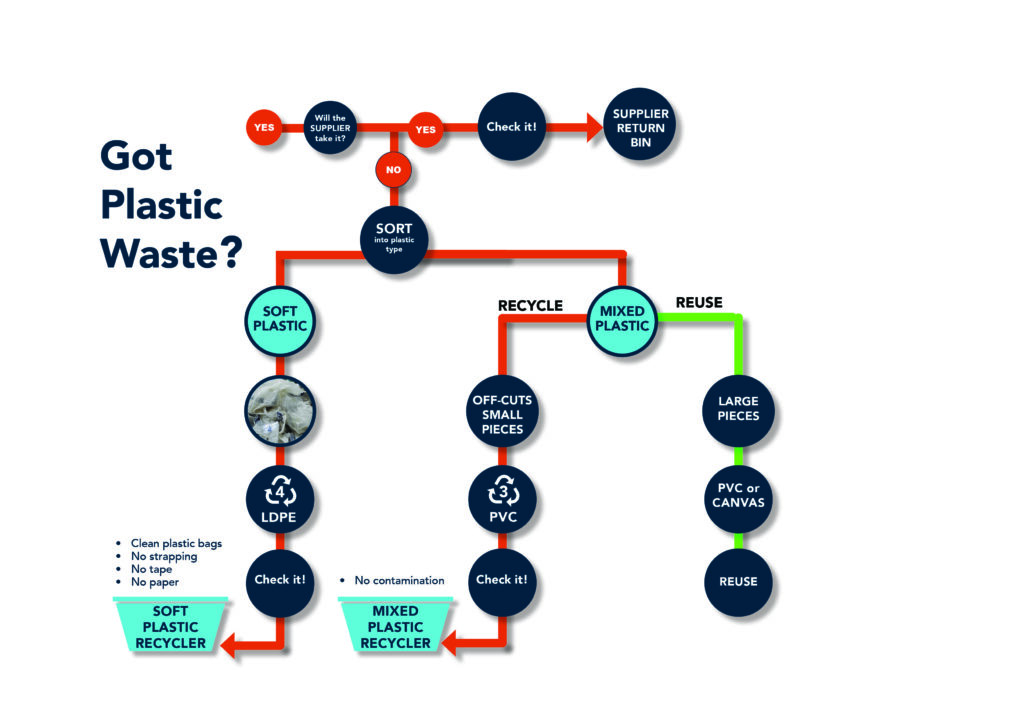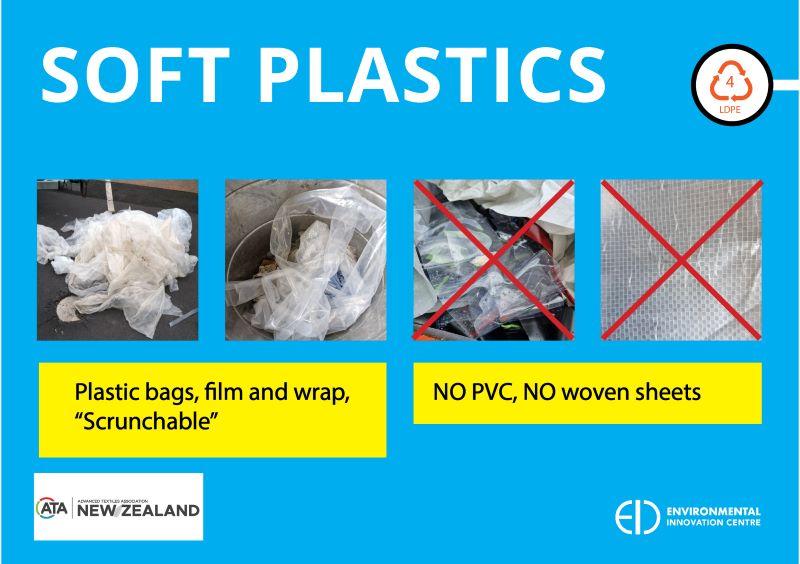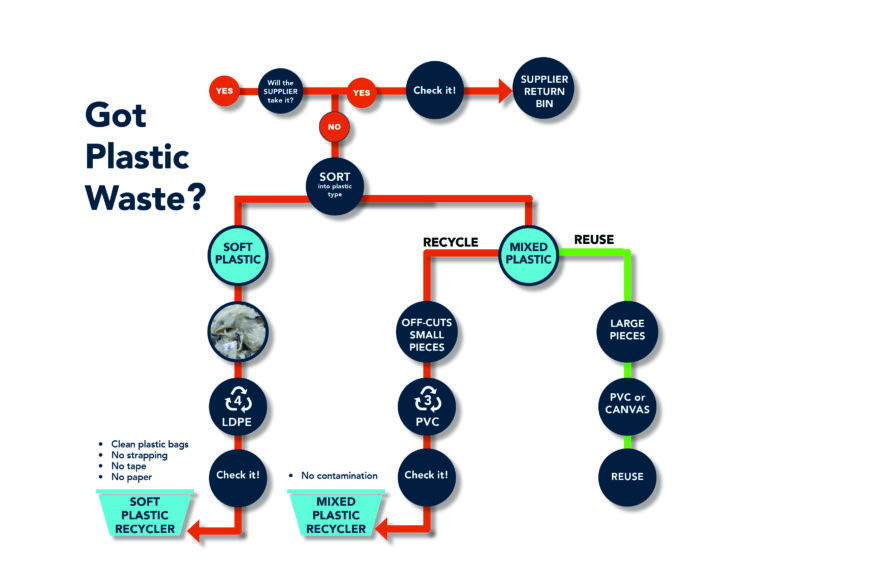BLOG
Sustainable Waste Management Study
Over Autumn, ATA NZ worked with Environmental Innovation Centre (EIC) to design and trial sustainable waste management strategies for the outdoor and industrial textile industry. The EIC team worked with volunteer ATA NZ member, Duncan’s Canvas, to create, communicate and produce better environmental outcomes. The first stage of this project targeted plastic waste materials, particularly those which are most problematic, as well as high volume wastes or those wastes for which there is a clear circular solution available. The aims of the project were to:
Audit and Identify Waste Streams – including design of bespoke signage (using visual language), on-site auditing of plastic waste stream and analysis of plastic waste composition, using specialised FTIR spectroscopy to identify waste type and purity.
Explore Waste Reduction Options – based on the waste audit, there will be an exploration of options to reduce the production of waste which may include discussion with any key suppliers, investigating alternative/novel packaging solutions etc.
Provide Waste Option Evaluations – Final report summarising current waste to landfill data with option evaluations for reduce, reuse or recycling (according to the waste hierarchy)
Samples taken were analysed for polymer type or material type (using FTIR spectroscopy). There were four main categories of materials – PE, PVC, Canvas and other materials. Based on the waste collection information given by Duncan’s canvas, we estimate that their warehouse generates 36 – 54 m3 of mixed waste per year (currently collected by Waste Management NZ).
Of the general waste skip, we estimate that:
60% are offcuts, e.g. pieces of PVC sheets and acrylic canvas (22 – 32 m3)
20% are soft plastic waste which can be recycled and diverted from landfill (7– 11m3 or 200-300 kg)
10% are other packaging waste (excludes soft plastics) (4-5 m3)
10% are miscellaneous waste (4-5 m3)

Material offcuts are the largest source of general waste at Duncan’s Canvas. Therefore, reusing large excess pieces and recycling small offcuts (e.g. by diverting plastic offcuts to multi-stream recyclers) would significantly reduce overall waste.
Next are soft plastics from packaging – if these are recycled, we estimate that Duncan’s Canvas would have an annual carbon emission reduction of 298 – 597 eCO2 (based on a number of assumptions). EIC has put together a Plastic Waste decision tree. If you would like this in a larger version, please email Amanda at [email protected].





